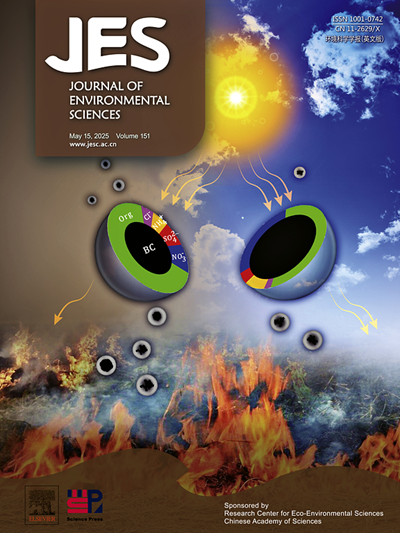Generative discovery of safer chemical alternatives using diffusion modeling: A case study in green solvent design for cyclohexane/benzene extractive distillation
IF 5.9
2区 环境科学与生态学
Q1 ENVIRONMENTAL SCIENCES
引用次数: 0
Abstract
Over the past century, advancements in chemistry have significantly propelled human innovation, enhancing both industrial and consumer products. However, this rapid progression has resulted in chemical pollution increasingly surpassing planetary boundaries, as production and release rates have outpaced our monitoring capabilities. To catalyze more impactful efforts, this study transitions from traditional chemical assessment to inverse chemical design, introducing a generative graph latent diffusion model aimed at discovering safer alternatives. In a case study on the design of green solvents for cyclohexane/benzene extraction distillation, we constructed a design database encompassing functional, environmental hazards, and process constraints. Virtual screening of previous design dataset revealed distinct trade-off trends between these design requirements. Based on the screening outcomes, an unconstrained generative model was developed, which covered a broader chemical space and demonstrated superior capabilities for structural interpolation and extrapolation. To further optimize molecular generation towards desired properties, a multi-objective latent diffusion method was applied, yielding 19 candidate molecules. Of these, 7 were identified in PubChem as the most viable green solvent candidates, while the remaining 12 as potential novel candidates. Overall, this study effectively designed green solvent candidates for safer and more sustainable industrial production, setting a promising precedent for the development of environmentally friendly alternatives in other areas of chemical research.

求助全文
约1分钟内获得全文
求助全文
来源期刊

Journal of Environmental Sciences-china
环境科学-环境科学
CiteScore
13.70
自引率
0.00%
发文量
6354
审稿时长
2.6 months
期刊介绍:
The Journal of Environmental Sciences is an international journal started in 1989. The journal is devoted to publish original, peer-reviewed research papers on main aspects of environmental sciences, such as environmental chemistry, environmental biology, ecology, geosciences and environmental physics. Appropriate subjects include basic and applied research on atmospheric, terrestrial and aquatic environments, pollution control and abatement technology, conservation of natural resources, environmental health and toxicology. Announcements of international environmental science meetings and other recent information are also included.
 求助内容:
求助内容: 应助结果提醒方式:
应助结果提醒方式:


